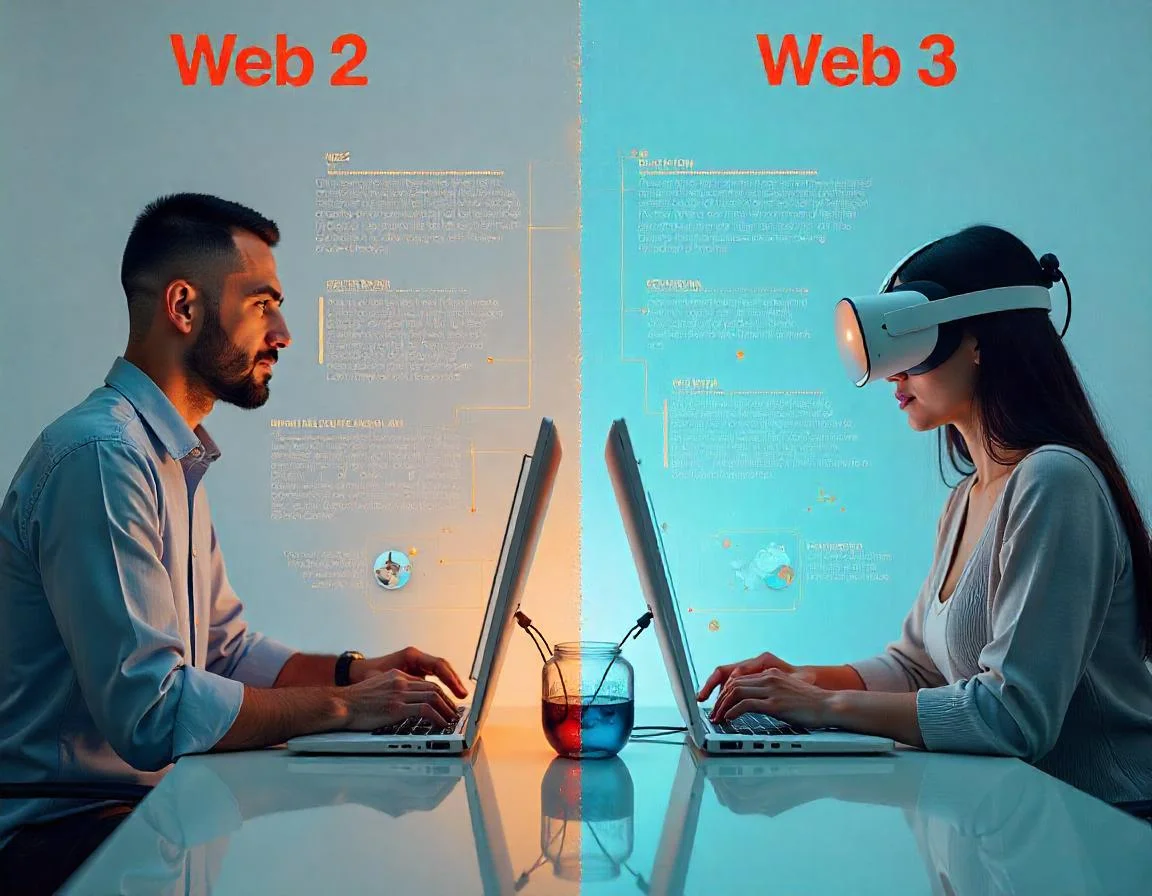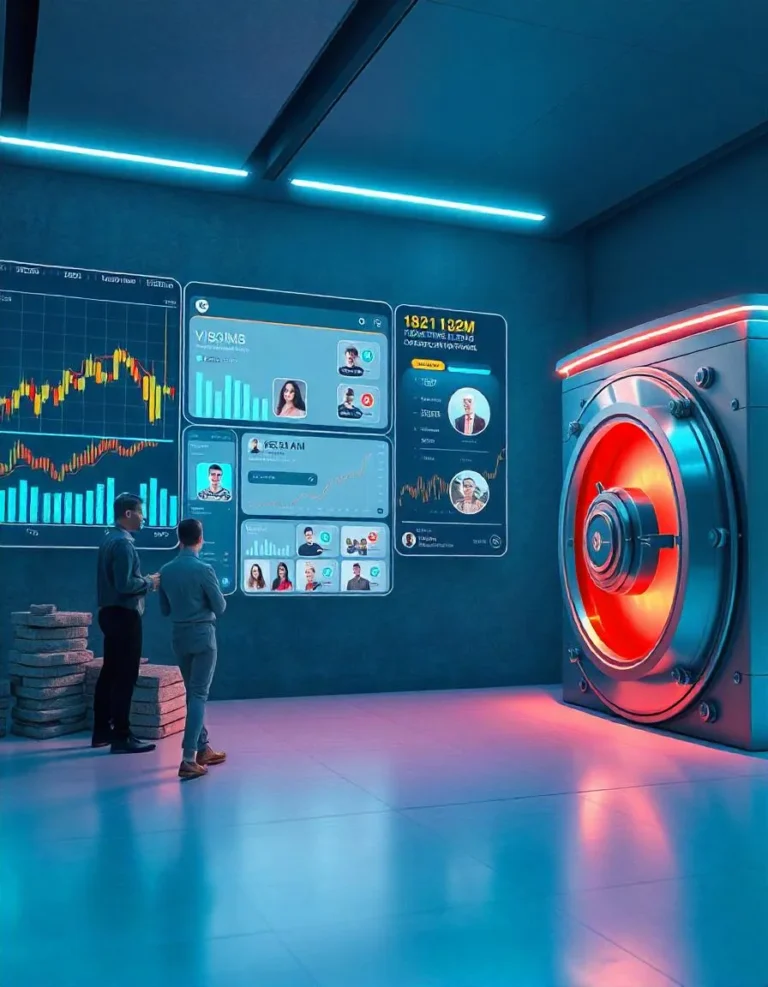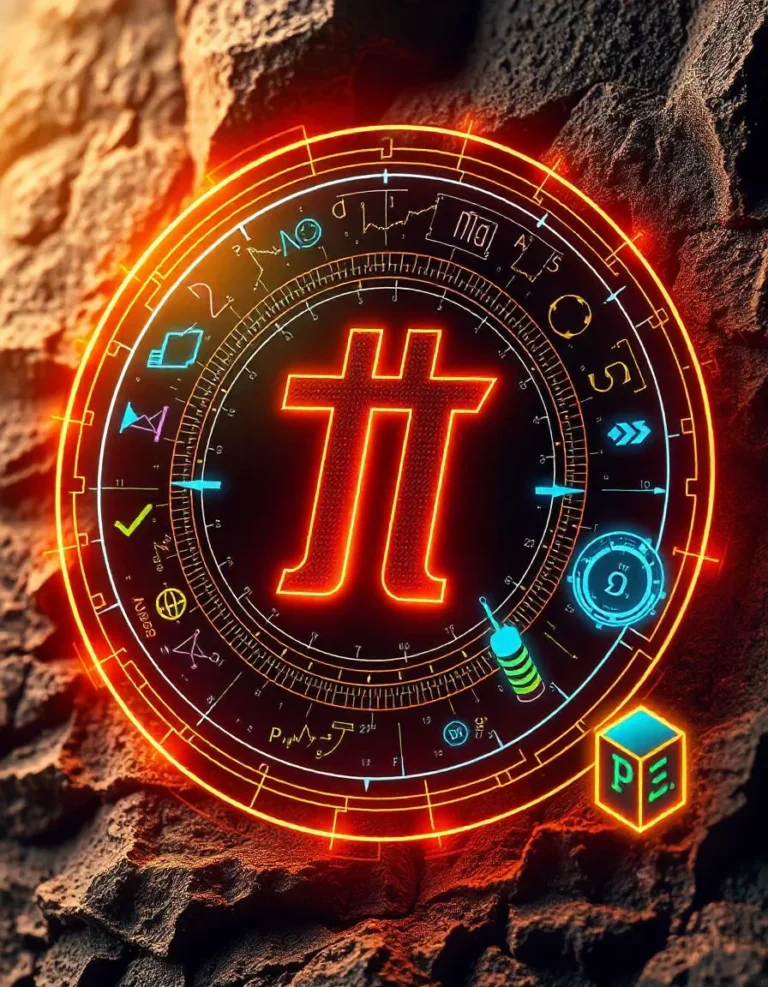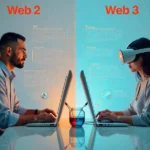The evolution of the internet has significantly impacted how we interact, share, and transact online. The debate surrounding Web2 vs Web3 is reshaping the vision of the digital landscape. While Web2 relies on centralized platforms, Web3 promotes decentralization and user ownership. Let’s explore the key differences, benefits, challenges, and the future of these two internet iterations.
What Is Web2?
The Interactive Era of the Internet
Web2 refers to the current version of the internet as we experience it today. It marked a shift from static web pages (Web1) to interactive platforms. This era began around 1999 and brought user-generated content, dynamic interfaces, and social connectivity.
Key Characteristics of Web2
- Centralized Platforms: Companies like Facebook, YouTube, and Google dominate.
- Data Ownership: User data is collected, stored, and monetized by these centralized entities.
- Ease of Access: High-speed connections and user-friendly interfaces made Web2 a global phenomenon.
However, Web2’s model has raised concerns over privacy, data misuse, and the concentration of power among a few corporations.
What Is Web3?
The Decentralized Future
Web3 represents the future phase of the internet’s development.. It envisions a decentralized, user-focused ecosystem built on blockchain technology.
Key Features of Web3
- Decentralization: Authority transitions from central organizations to distributed systems.
- User Ownership: People gain control over their data and virtual possessions.
- Trustless Systems: Transactions are validated through algorithms rather than intermediaries.
Web3’s foundation lies in blockchain, smart contracts, and cryptocurrencies, enabling transparent and secure interactions.
Why Is Web3 Relevant Today?
The push for Web3 stems from current issues in Web2. Centralized platforms control user data, enabling censorship and exploitation. In contrast, Web3 fosters transparency, user control, and innovation.
Trends Driving Web3 Adoption
- Rise of Decentralized Finance (DeFi): Users bypass banks to access financial services directly.
- Demand for Data Privacy: Growing awareness of data misuse has sparked interest in decentralized solutions.
- Integration with the Metaverse: Web3 powers immersive, user-owned virtual experiences.
These trends highlight why the transition from Web2 vs Web3 is gaining momentum.
Benefits of Web3 Over Web2

1. Data Ownership
In Web2, companies own and monetize user data. Web3 empowers users to control their information and decide how it’s used.
2. Censorship Resistance
Web3’s decentralized nature ensures that no single entity can censor or restrict content arbitrarily.
3. Transparent Transactions
Blockchain technology ensures that all interactions are verifiable and immutable, fostering trust among users.
4. Enhanced Privacy
Cryptographic methods in Web3 protect user identity, reducing the need for sharing sensitive personal information.
Limitations and Challenges of Web3
While Web3 offers exciting possibilities, it’s not without hurdles.
1. Scalability Issues
Current blockchain systems struggle with high transaction volumes, leading to slower speeds.
2. Complex User Interfaces
Web3 applications are often less intuitive than their Web2 counterparts, limiting adoption.
3. Energy Consumption
Certain blockchain networks use substantial amounts of energy, leading to environmental issues.
4. Regulatory Uncertainty
Governments across the globe are still struggling to establish regulations for decentralized systems.
Web2 and Web3: Can They Coexist?
Rather than a complete replacement, Web2 and Web3 might coexist to serve different purposes.
- Web2: Ideal for centralized services like e-commerce and streaming.
- Web3: Better suited for decentralized applications (dApps) like DeFi and DAOs.
This hybrid approach could create a balanced digital ecosystem.
Real-Life Comparison of Web2 and Web3 Platforms
| Aspect | Web2 | Web3 |
|---|---|---|
| Social Media | Decentralized platforms like Mastodon | |
| Payments | PayPal, Stripe | Cryptocurrencies like Bitcoin |
| Data Ownership | Owned by corporations | Owned by users |
| Content Control | Centralized moderation | Community-based governance |
This table highlights how Web2 vs Web3 platforms differ fundamentally.
How Web3 Can Reshape Specific Industries
1. Gaming
Web3 allows players to own in-game assets and trade them across platforms, revolutionizing virtual economies.
2. Finance
Decentralized finance (DeFi) eliminates intermediaries, offering peer-to-peer loans, insurance, and more.
3. Healthcare
Blockchain ensures secure, tamper-proof medical records, enabling better patient care and data privacy.
4. Supply Chain
Web3 improves transparency and traceability, reducing fraud and inefficiencies in global supply chains.
Future of the Internet: Beyond Web3?
While Web3 is still evolving, discussions about the next phase have already begun. Web4 might focus on hyper-intelligent, AI-driven ecosystems. Technologies like quantum computing could redefine trust, ownership, and decentralization.
FAQs About Web2 vs Web3
Q1: What is The most significant distinction between Web2 and Web3?
Web2 relies on centralized platforms, while Web3 promotes decentralization and user ownership.
Q2: Is Web3 replacing Web2?
Not entirely. Web3 complements Web2 by introducing decentralized features, but they may coexist.
Q3: Why is Web3 better than Web2?
Web3 offers more privacy, data ownership, and transparency, reducing dependence on intermediaries.
Conclusion
The Web2 vs Web3 debate represents the ongoing evolution of the internet. Web3 promises a decentralized, user-centric future but faces challenges in scalability and adoption. As industries explore its potential, Web3 could redefine how we interact, transact, and innovate online. The future might not be about choosing between Web2 and Web3 but finding harmony between these two digital worlds.








